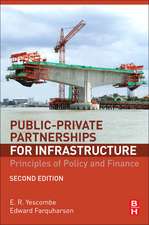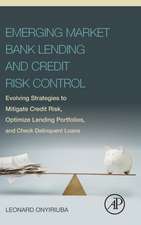Public Finance: A Normative Theory
Autor Richard W. Treschen Limba Engleză Paperback – 25 apr 2022
- Provides a logical progression from normative theory to concise mathematical applications
- Covers European examples, welfare economics and tax law updates
- Includes pedagogical supplements such as end-of-chapter questions and answers
| Toate formatele și edițiile | Preț | Express |
|---|---|---|
| Paperback (1) | 455.77 lei 5-7 săpt. | +100.94 lei 10-14 zile |
| ELSEVIER SCIENCE – 25 apr 2022 | 455.77 lei 5-7 săpt. | +100.94 lei 10-14 zile |
| Hardback (1) | 426.31 lei 6-8 săpt. | |
| ELSEVIER SCIENCE – 3 dec 2014 | 426.31 lei 6-8 săpt. |
Preț: 455.77 lei
Preț vechi: 597.30 lei
-24% Nou
87.21€ • 91.30$ • 72.16£
Carte tipărită la comandă
Livrare economică 29 martie-12 aprilie
Livrare express 04-08 martie pentru 110.93 lei
Specificații
ISBN-10: 0128228644
Pagini: 568
Ilustrații: Approx. 200 illustrations
Dimensiuni: 216 x 276 x 32 mm
Greutate: 1.55 kg
Ediția:4
Editura: ELSEVIER SCIENCE
Public țintă
Advanced undergraduate and graduate students studying public finance and public economics, and more broadly welfare economics.Cuprins
1. Introduction to Normative Public Sector Theory
2. A General Equilibrium Model for Public Sector Analysis
3. First-Best and Second-Best Analysis and the Political Economy of Public Sector Economics
Part II: The Theory of Public Expenditures and Taxation—First-Best Analysis
4. The Social Welfare Function in Policy Analysis
5. The Problem of Externalities--An Overview
6. Consumption Externalities
7. Production Externalities
8. Global Warming: An Application of Externality Theory
9. The Theory of Decreasing Cost Production
10. The First-Best Theory of Taxation
11. Applying First-Best Principles of Taxation—What to Tax and How
Part III: The Theory of Public Expenditures and Taxation: Second-Best Analysis
12. Introduction to Second-Best Analysis
13. The Second-Best Theory of Taxation in One-Consumer Economies with Linear Production Technology
14. The Second-Best Theory of Taxation with General Production Technologies and Many Consumers
15. Taxation Under Asymmetric Information
16. The Theory and Measurement of Tax Incidence
17. Expenditure Incidence and Economy-Wide Incidence Studies
18. The Second-Best Theory of Public Expenditures: Overview
19. Transfer Payments and Private Information
20. Social Insurance: Medical Care
21. Social Insurance: Social Security
22. Externalities in a Second-Best Environment
23. Decreasing Costs and the Theory of the Second-Best—The Boiteux Problem
24. General Production Rules in a Second-Best Environment
25. Behavioral Public Sector Economics
Part IV: Fiscal Federalism and International Public Finance
26. Optimal Federalism: Sorting the Functions of Government Within the Fiscal Hierarchy
27. Optimal Federalism: The Sorting of People within the Fiscal Hierarchy
28. The Role of Grants-in-Aid in a Federalist System of Governments
29. International Public Finance
Recenzii
"... outstanding in the breadth of its coverage, in the quality of exposition, and in the balance between theory and policy... especially good at melding newer approaches to the normative study of the public sector with traditional ones." --Robin Boadway, Queen's University in Kingston, Ontario, Canada
"I have hoped for years that Richard Tresch would revise his Public Finance text. This volume is well worth the wait. It is comprehensive, up-to-date, and very clearly written. It is a natural reading for a graduate course in public finance. It will also serve as a fine reference for specialists in the field." --Harvey Rosen, Department of Economics, Princeton University, Princeton, USA
Descriere
Public Finance remains the premier textbook on the normative theory of government policy, with the third edition propelling into the twenty-first century its examination of what government ought to be doing instead of what it is doing.
The welfare aspects of public economics receive extensively renewed examination in this third edition. With four new chapters and other significant revisions, it presents detailed and comprehensive coverage of theoretical literature, empirical work, environmental issues, social insurance, behavioral economics, and international tax issues. With increased emphasis on the European Union, it is rigid enough for use by PhDs while being accessible to students less well trained in math.
- Moves skillfully from explaining normative theory to applying it in mathematically compact and precise terms
- Adds new chapters on social insurance, medical care, social security pensions, behavioral public economics, and international public finance
- Includes new pedagogical supplements, including end-of-chapter questions and answers
- Emphasizes European examples






















